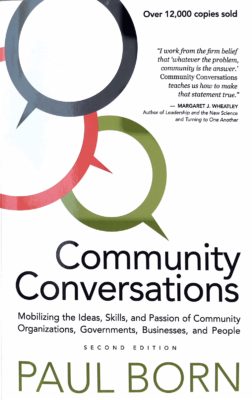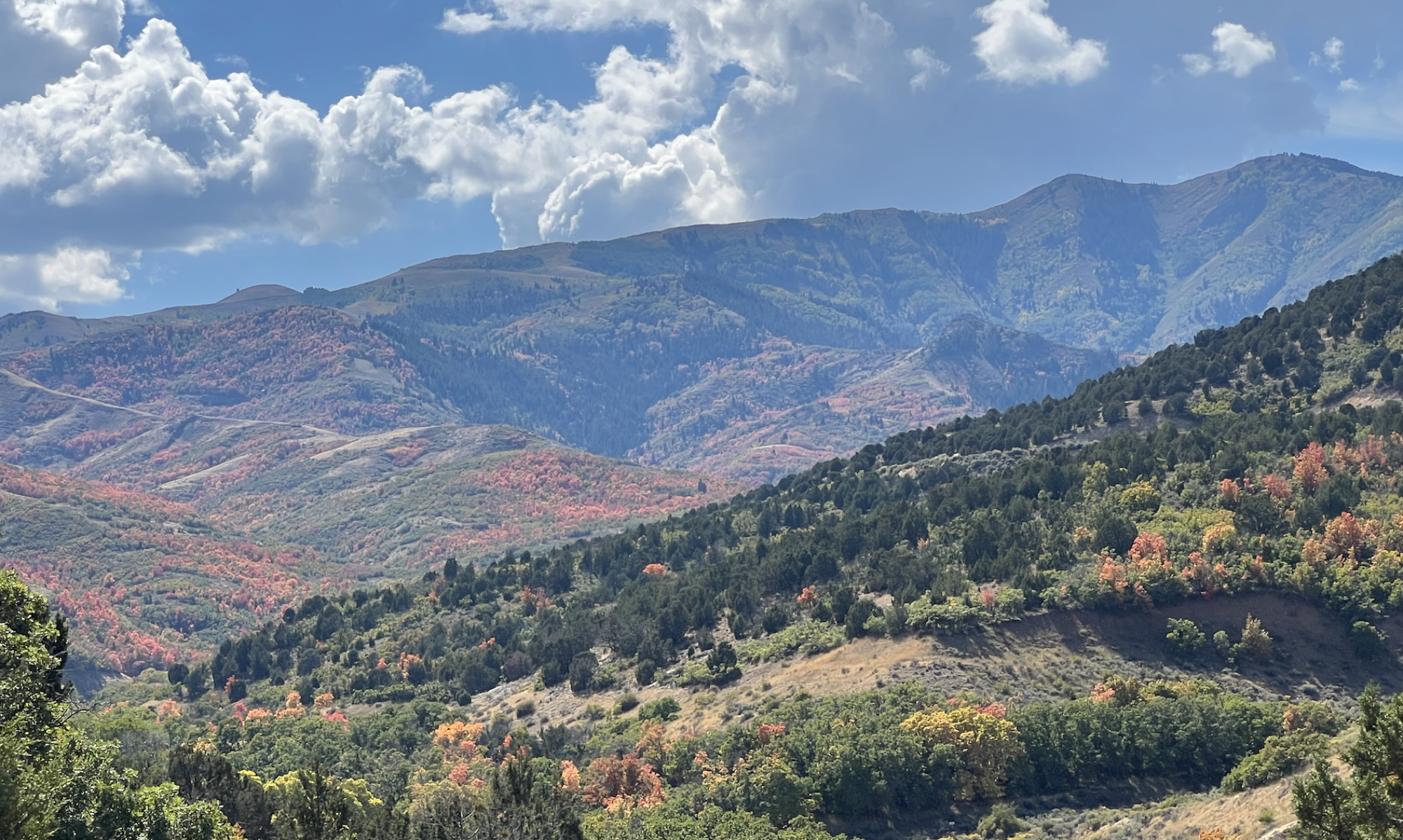
I enjoyed reading this book recently, Community Conversations, written by Paul Born (2012) from Canada. I haven’t met Paul in person, but he is someone that has been recommended to me by others.
I love Paul’s reference to connect dialogue and collaboration. Essential. Essence. I like the way that he points the narrative to going as community. Collaboration sometimes means the details of getting ducks in a row. Often, however, it means something much less projecty than that. It’s lifeline, the medium of water to fish, that connects us and sustains us in engagement together. It’s lifeline to help us encounter more of the invisible that is created “among” us, not just in any one of us. Ah, shoot, I just love it when people encourage a narrative of wholeness. And, of course, it’s not just about words. Dialogue, and conversation, are just a couple of the ways that we humans get to wholeness, aren’t they.
Here’s a few other insights I found and appreciated in Paul’s book.
- “Dialogue is a collective way to open up judgements and assumptions (David Bohm).” — Given that I’m in a summer in which much of the work I’m convening is deep dives into The Circle Way, this concept jumps out at me. It helps respond to the question of “Why go together?” And, knowing that there are many responses to this question, one that excites me is about being able to see together what can’t be seen alone. It’s hard to tickle yourself. It kind of needs another person. It’s hard to see assumptions. We kind of need each other.
- “The first skill is the ability to see the forest and the trees (Peter Senge).” — Beauty here, isn’t there. It’s not just one of the two, though some of us are uniquely oriented to forest while some of us are naturally focused on the trees. I love the invitation, and requirement, to cultivate capacity to see both. If I go back to The Circle Way with this, I love the way that circle creates container to see the forest and flip fluidly between foreground and background. With groups, it’s the aha glimpse when someone speaks the ephemeral that is trying to be seen among us and we all nod in delight for the clarity that gives us direction. Or grounding. Forest. Trees.
- “The second skill is to nurture the tension between process and action.” — I run into this everywhere. It’s actually a nuanced version of Senge’s forest and trees. Some people are delighted to dwell in process, in the becoming. Process aggravates the bejeebers out of others. Some people are hell bent for action and efficiency. For others, the fixation on action strips most of the poetry from the work. I love Paul Born’s invitation to notice the tension and then to nurture it. That means be kind to it. That means developing an ability to suspend some pretty deeply engrained bias.
I’m glad friends recommended this book to me. I enjoyed the read. I enjoyed dipping in to a fellow Canadian’s words. I enjoyed feeling insights dance within me as the words helped me find some inner music. I enjoyed noticing for a moment, the water.



